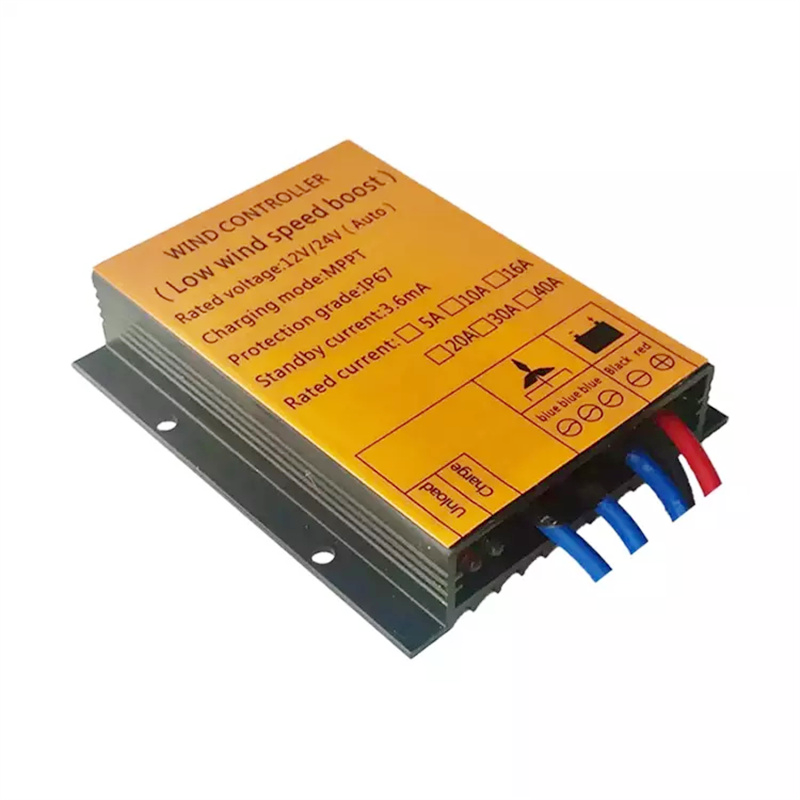Email format error
Email cannot be empty
Email already exists
6-20 characters(letters plus numbers only)
The password is inconsistent
Email format error
Email cannot be empty
Email does not exist
6-20 characters(letters plus numbers only)
The password is inconsistent


Unleashing the Power of Solar Wind Charge Controller MPPT
Harnessing renewable energy is becoming more essential as the world shifts towards sustainable living. One crucial technology in this transition is the solar wind charge controller MPPT (Maximum Power Point Tracking). These innovative devices play a pivotal role in optimizing the performance of solar and wind energy systems, ensuring maximum efficiency and reliability. This blog will delve into the fascinating world of MPPT controllers, exploring their functionality, benefits, and real-world applications.
Understanding MPPT Technology
At the heart of any solar or wind energy system lies the charge controller. Its primary function is to regulate the voltage and current flowing from the solar panels or wind turbines to the battery bank. Traditional charge controllers do this effectively, but MPPT controllers take it a step further by maximizing the energy harvest.
The key to MPPT technology is its ability to constantly monitor and adjust the power output to match the optimal operating point of the solar panels or wind turbines. This optimal point, known as the Maximum Power Point (MPP), varies with changing environmental conditions such as sunlight intensity and wind speed. By tracking this point, MPPT controllers ensure that the energy system operates at peak efficiency, even under fluctuating conditions.
The Science Behind MPPT
To understand the magic of MPPT, let's dive into a bit of science. Solar panels and wind turbines have a nonlinear power output curve, meaning their voltage and current vary with the amount of sunlight or wind they receive. The MPPT controller uses sophisticated algorithms to analyze these variations in real-time.
For instance, on a cloudy day, the sunlight intensity drops, causing the solar panel's voltage to decrease. A traditional charge controller might struggle to maintain optimal power output, but an MPPT controller dynamically adjusts its parameters to find the new MPP. This adaptive approach allows the system to extract the maximum possible energy, making the most of available resources.

Advantages of Solar Wind Charge Controller MPPT
1. Increased Efficiency
The primary advantage of MPPT controllers is their ability to significantly enhance the efficiency of solar and wind energy systems. By continuously tracking the MPP, these controllers can boost energy harvest by up to 30% compared to traditional controllers. This means more energy for your home or business, reducing reliance on the grid and lowering energy costs.
2. Enhanced Battery Life
MPPT controllers not only optimize energy capture but also protect the battery bank. By ensuring that the batteries are charged at the optimal voltage, these controllers prevent overcharging and undercharging, both of which can shorten battery life. This leads to longer-lasting batteries and fewer replacements, saving you money in the long run.
3. Versatility and Adaptability
One of the standout features of MPPT controllers is their versatility. They can be used with a wide range of solar panels and wind turbines, making them suitable for various renewable energy setups. Whether you have a small off-grid cabin or a large commercial installation, an MPPT controller can adapt to your specific needs.
4. Better Performance in Low-Light and Variable Conditions
MPPT controllers shine in conditions where traditional controllers falter. During cloudy days, early mornings, late afternoons, or when wind speeds fluctuate, MPPT technology ensures that your system continues to operate efficiently. This capability is crucial for maintaining a steady energy supply, even when nature isn't cooperating.
Real-World Applications
The benefits of solar wind charge controller MPPT technology extend across various applications, from residential homes to industrial complexes.
Residential Use
For homeowners looking to embrace renewable energy, an MPPT controller is a game-changer. It maximizes the energy harvested from rooftop solar panels or small wind turbines, ensuring a steady supply of electricity for daily use. This can significantly reduce monthly utility bills and provide a reliable backup during power outages.
Off-Grid Systems
In remote areas where access to the grid is limited or non-existent, MPPT controllers are invaluable. They enable off-grid systems to operate at maximum efficiency, ensuring a constant power supply for lighting, appliances, and other essential needs. This is particularly beneficial for cabins, farms, and remote research stations.
Commercial and Industrial Installations
Large-scale commercial and industrial renewable energy systems also benefit from MPPT technology. By optimizing energy capture, these controllers help businesses reduce operational costs and minimize their carbon footprint. MPPT controllers are instrumental in achieving sustainability goals and meeting regulatory requirements.
Hybrid Systems
MPPT controllers are ideal for hybrid systems that combine solar and wind energy. By seamlessly integrating both energy sources, these controllers ensure a balanced and efficient power supply. This is particularly useful in regions with variable weather conditions, where relying on a single energy source might be insufficient.
Choosing the Right MPPT Controller
When selecting an MPPT controller for your solar or wind energy system, several factors should be considered to ensure you get the best performance and value. Here’s a guide to help you make an informed choice:
1. System Voltage Compatibility
MPPT controllers come in various voltage configurations to match different solar panels and battery systems. Ensure that the MPPT controller you choose is compatible with your system’s voltage. Most controllers support standard voltages such as 12V, 24V, or 48V, but there are models available for higher or custom voltages as well.
2. Maximum Power Rating
Each MPPT controller has a maximum power rating, which indicates the highest amount of power it can handle. This rating should be higher than the total output power of your solar panels or wind turbines. Choosing a controller with a suitable power rating ensures it can handle the maximum potential output from your energy sources without being overloaded.
3. Efficiency and Performance
Not all MPPT controllers are created equal. Check the efficiency ratings of different models, as this impacts how well they can track and optimize the Maximum Power Point. Higher efficiency controllers will maximize energy capture and improve overall system performance. Look for controllers with efficiency ratings above 95% to ensure optimal performance.
4. Features and Functions
MPPT controllers come with a range of features, including LCD displays, remote monitoring, temperature compensation, and advanced safety protections. Consider the features that are important for your specific needs. For instance, if you prefer remote monitoring, choose a controller with Wi-Fi or Bluetooth connectivity.
5. Brand and Warranty
Opt for reputable brands known for their reliability and customer support. A good warranty can also provide peace of mind, covering potential issues or defects. Check customer reviews and manufacturer warranties to gauge the quality and durability of the MPPT controller.
6. Installation and Maintenance
Ensure that the MPPT controller is compatible with your existing setup and easy to install. Some models come with user-friendly manuals and support for installation. Regular maintenance and monitoring are also important to keep your system running smoothly. Choose a controller that provides easy access to settings and diagnostics.
Conclusion
The solar wind charge controller MPPT is a revolutionary technology that transforms the efficiency and reliability of renewable energy systems. By continuously tracking and adjusting to the Maximum Power Point, these controllers maximize energy harvest, extend battery life, and ensure optimal performance even in challenging conditions. Whether you're a homeowner, an off-grid enthusiast, or a business owner, investing in an MPPT controller can significantly enhance your renewable energy setup, making it a smart choice for a sustainable future.
Embrace the power of solar wind charge controller MPPT and take a step towards a greener, more efficient energy solution today.

